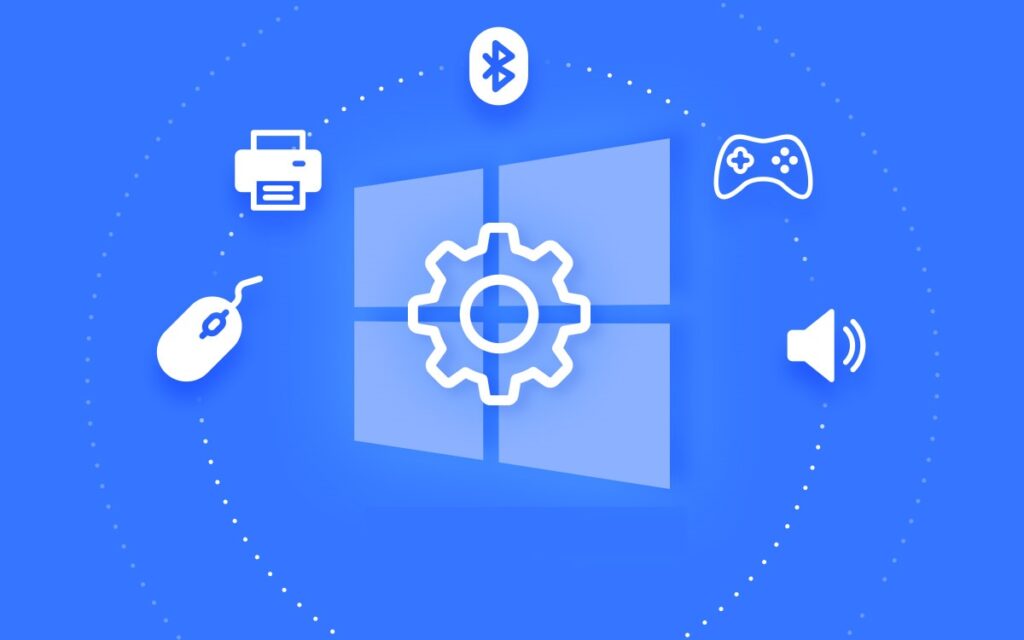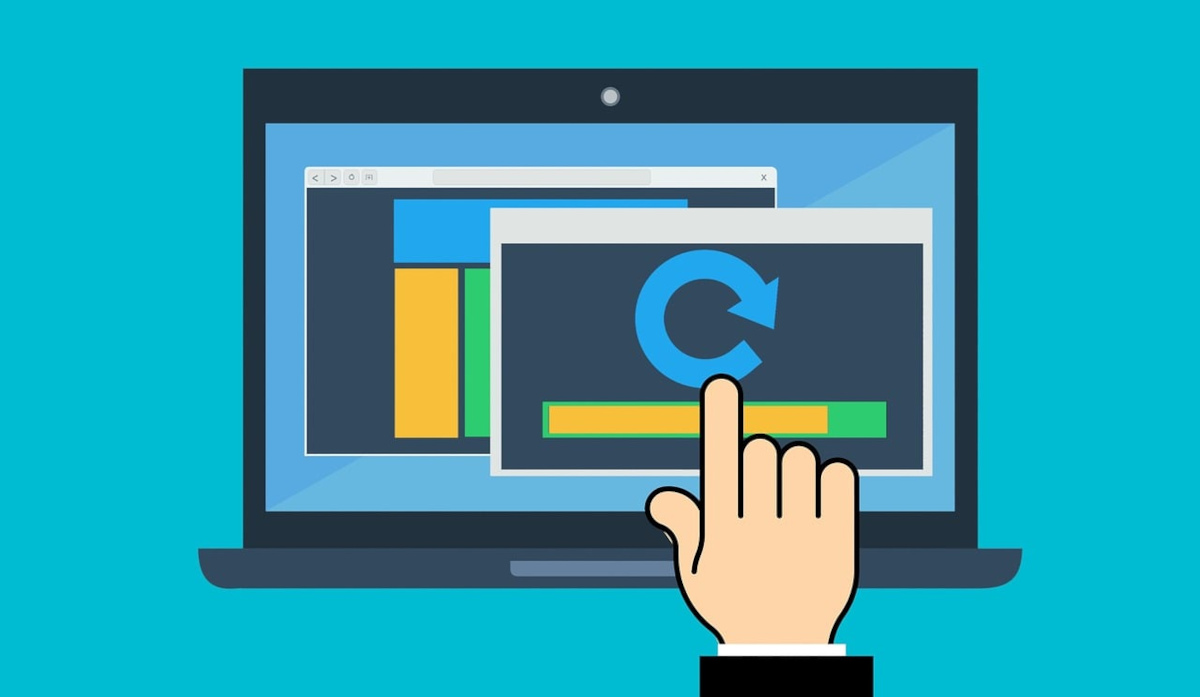- Drivers are essential for the operating system and hardware to communicate properly.
- There are different types of drivers depending on their function, format and level of integration.
- Keeping drivers up to date is critical for system stability, performance, and security.
- The proper selection and management of drivers depends on the type of device and the usage environment.

Have you ever wondered how your computer or other devices work properly and understand each other? Drivers are key to ensuring that your computer's hardware and operating system speak the same language, allowing everything to function as it should. In this article, we'll review the basics. What types of drivers exist and what differences there are between them.
Behind every peripheral, every component, and even many applications, there's a driver working to keep everything running smoothly. We analyze what happens when you don't keep them updated and how they directly affect your PC's performance and stability.
What is a driver and what is it used for?
A driver, also known as a device driver, is a piece of software that acts as an intermediary between the operating system and a physical component (hardware) or even an applicationWithout this element, the system simply wouldn't be able to understand how to take advantage of the hardware, whether it's a printer, a graphics card, a special keyboard, or a simple webcam.
Its mission is to translate the operating system's instructions into the specific language the hardware needs to function. That is: The key to the driver is in communicationOn the one hand, the operating system receives information from the hardware, and on the other, it can send commands to it in a format it understands. Thanks to them, we can use the computer without worrying about low-level technical details, and the devices function as intended by the manufacturer.
Furthermore, Most operating systems include generic drivers to provide basic component functionality, although this often means sacrificing advanced features or optimal performance. If you want your device to perform at its best, The ideal is to install the specific driver, provided by the manufacturer itself..

Main categories of drivers
There are many ways to classify drivers, but the most common is to distinguish between:
- Universal or generic drivers: These are provided by the operating system itself, allowing the hardware to be used in a basic way.
- Specific or proprietary drivers: These are developed by the manufacturer of each component or device. They're designed to take advantage of all the hardware's advanced features and functions, from unusual screen resolutions to special sound effects or extra functionality on keyboards and mice. They require separate installation and are essential to get the most out of the device..
The difference is clear: If you want basic functionality, the generic ones may be enough, but to enjoy everything your hardware has to offer, you need the specific drivers for each manufacturer..
Types of drivers according to their function
Let's break down the main types of drivers, beyond the classic division between universal and specific, to better understand how each one intervenes in the operation of the computer or any electronic device.
- Device or hardware driver: This is the most common driver. It allows the operating system to control and interact with a specific component, such as a graphics card, network card, printer, etc. Without it, that peripheral would be practically invisible to the system.
- printer driver: This is a specific type of driver whose job is to translate data sent from the PC into a language the printer understands. Thanks to it, documents arrive at the printer correctly and with the desired configuration.
- Class Controller: This driver is capable of working with multiple devices that share the same category or standard.
- Programmable logic controller (PLC): Very common in industrial automation. It allows you to program and adapt the control logic to the factory's needs.
- Peripheral controller: It's a hardware component, not software, that helps interconnect the physical peripheral (such as a hard drive) with the CPU. Although it's not exactly a software driver, it's important not to confuse the two concepts.
- Wrapper controller or wrapper controller: Acts as a bridge so that devices not officially supported by an operating system can be recognized and interact with it.
- JDBC Driver: It is a type of software that allows Java applications to connect to databases. It is widely used in programming and cross-platform application development.
Driver models in modern operating systems
The case of Windows systems is especially illustrative to understand How drivers can follow specific models or architectures depending on the functionality and type of deviceThese models determine how the driver is structured, what tasks it performs, and how it interacts with the operating system and other drivers.
- Device Function Controller: It is the one that directly controls the key functions of a device. For example, the main driver for a graphics card is a function driver.
- Device Filter Driver: It sits between the software and the function controller, allowing additional processing to be added (e.g., parental control, event logging, etc.) without modifying the basic operation of the hardware.
- Software driver: It is not physically associated with any hardware component, but can manage advanced services (for example, access to protected data in kernel mode, or security features).
- File system driver: Manages access and organization of files and directories on disks, acting as an intermediary between the operating system and the different storage systems.
- File system filter driver: Adds extra layers of functionality on top of the file system, for example, for automatic backups, encryption, or real-time antivirus.
- mini driversIn some cases, the driver is divided into two parts: a common part and a device-specific part. Microsoft typically provides the generic part, while the manufacturer provides the specific part, which facilitates integration and maintenance.
The choice of the appropriate driver model depends on the type of hardware, the intended purpose, and the architecture of the operating system.. If you want to dig deeper into how drivers manage functions on Windows systems, we recommend checking out our guides on How to view the drivers for my Windows 10 PC.
Industrial and automation drivers
In the world of industry, the Drivers and controllers take on another dimensionIt's not just about making a machine work, but about integrating complex production, automation, and control systems. The main types are:
- PLC (Programmable Logic Controllers): They are the brains behind many production lines, factories, and automated processes. They were originally designed to replace relay systems, but today they have evolved into much more complex tasks, including analog and digital inputs and outputs.
- DCS (Distributed Control Systems): They are focused on large-scale industrial process control, with advanced integration with operator interface (HMI) systems and engineering platforms.
- PAC (Programmable Automation Controllers)They harness the power of computers, but are adapted and reinforced for the demanding environment of industrial plants. They allow for flexible and scalable process control and monitoring.
These technologies are often present in environments where reliability, robustness, and adaptability are essential.
The importance of keeping drivers updated
If there is one thing that all experts agree on, it is that Keeping your drivers up to date is essential to avoid performance, security, and compatibility issues.An outdated driver can cause anything from minor graphical glitches to crashes, system errors, or even render a component completely unusable.
The operating system itself usually detects the hardware and installs generic drivers automatically, although it doesn't always cover all devices or the most advanced features. If the system doesn't find the correct driver, you'll see alerts in Device Manager, indicating that you should search for and install the correct driver manually, ideally from the manufacturer's official website.
There are also tools that help us to know which drivers I need on my PC, although always It is advisable to download them directly from the manufacturer to reduce the risk of incompatibilities or even malware.
On laptops, it's often enough to download the model-specific driver pack, while on desktop PCs you may need to install each one separately.
What problems can you have if the drivers are incorrect or outdated?
Not having the right driver can lead to all sorts of headaches:
- Low compatibility: The hardware may only work partially or not at all.
- Device failure: Graphics cards not displaying anything, printers not printing, etc.
- Security issuesAn outdated driver can leave the door open to attacks, especially if it allows access to protected data.
- Crashes and serious errors: From continuous crashes to blue screens or unexpected reboots.
- Error messages in the system: Windows and other systems will display warnings if something isn't working properly.
In industrial systems, an inadequate driver can even halt an entire production process, with the resulting economic impact. Therefore, It is essential to trust only digitally signed drivers and always download from trusted sources.Signed drivers have passed quality and security checks, minimizing the risk of containing malware or harmful code.
How to identify, install, and verify drivers on your computer
To install any type of driver, it's always best to go to the official website of the hardware manufacturer in question. There, you can download the specific version for your operating system and ensure it's compatible. It never hurts to check that the driver has a digital signature, which guarantees that it has not been tampered with or contains malicious elements..
Operating systems typically notify you when a new version of a driver is available or when one stops working. Additionally, using utilities like (in Windows), you can view the status of each driver and quickly identify any issues.
If you have multiple devices from different manufacturers, you may need to install different versions of the same driver, as each version of Windows (and system architecture) may require its own specific driver.
Editor specialized in technology and internet issues with more than ten years of experience in different digital media. I have worked as an editor and content creator for e-commerce, communication, online marketing and advertising companies. I have also written on economics, finance and other sectors websites. My work is also my passion. Now, through my articles in Tecnobits, I try to explore all the news and new opportunities that the world of technology offers us every day to improve our lives.


